I expect many readers of this website eagerly await the annual TEA/AECOM attractions attendance report: Is Magic Kingdom still the king? Has Universal gained ground on the mouse? Will Hong Kong Disneyland ever be profitable?
And there is a park on that list every year that perhaps you momentarily pause to mull over before mentally tallying the WDW vs UO sums; an enigma in a list you’re otherwise entirely familiar with. Chimelong Ocean Kingdom in Zhuhai, China claims the 6th most-visited park in the world position as of 2023, edging out parks such as Tokyo DisneySea and EPCOT, with a staggering 12.5 million guest attendance. Of the world’s busiest 20 parks, 17 of them are either Disney or Universal (the other two outsiders – Europa-Park and Everland – rank 18 and 19). Chimelong Ocean Kingdom is the only theme park in the world playing in the same league as the big boys, and rarely receives any kind of media attention in the theme park community – so what is this place’s deal?
Located on the island of Hengqin directly across the strait from the gambling capital of the world Macau, Ocean Kingdom is part of the larger Chimelong International Ocean Resort, an ambitious and still-underway project to become “the Orlando of China.” A second park, Chimelong Spaceship, opened in 2023 to dethrone Warner Bros. World Abu Dhabi as the world’s largest indoor theme park by more than double (you’ll soon pick up on Chimelong’s enthusiasm for Guinness World Records). The resort is currently also home to two large theaters hosting nightly circus performances and four themed hotels, with plans for two more theme parks in the future.
Before we get too far into this, let’s address the elephant – err, whale shark – in the room. Chimelong Ocean Kingdom is a marine theme park and carries with it all the questionable baggage that genre of entertainment has accrued over the years, especially from a Western perspective. Chimelong Ocean Kingdom almost certainly engages in all of the exploitative and unethical wildlife practises that chains like SeaWorld have been accused of, and likely to a degree that far exceeds those Western counterparts.
The China Cetacean Alliance, a wildlife advocacy group, notes that many animals in the park show classic sign of distress, including repetitive behaviors, self-mutilation, aggression and depression. They further claim that virtually all animals at Chimelong are wild captured, a practise universally condemned by conservationists. Of recent note, orcas were captured and sold from Russia for inclusion in the Chimelong Spaceship Park next door, according to the Hong Kong Dolphin Conservation Society. Ocean Kingdom is not a part of the World Association for Zoos and Aquariums (WAZA), a global organization that independently verifies animal welfare standards. At a time where programs like orca breeding and cetacean captivity are being ended in the West, they are just gearing up in China – the country went from 39 marine parks in 2014 to 101 in 2024, with 11 more on the way.
Now, I work in wildlife conservation in China as my day job (alas, we can’t all be full-time Theme Park Insiders), and I feel all this needs to be contextualized a little further. Chimelong is a polarizing place, and it is absolutely true the park engages in many practises antithetical to conservation goals – wild capture, prioritizing profits over animal welfare, and not submitting to independent monitoring to name a few. At the same time, it is also true that some of the exhibits are exceptionally well-done, and even the bad ones could be so much worse when relativized to the hundreds of other animal attractions across China. It is also true that there is plenty of educational signage and presentations, which people seem apparently eager to listen to.
When the first SeaWorld opened in 1964, China was a country and culture that still viewed wildlife strictly as a resource for consumption – paying good money to just look at them through a window would have been unthinkable to most. SeaWorld then went 50 years in the American cultural zeitgeist essentially free from widespread scrutiny for their unethical practises – Chimelong has only been around for 10. My point here is not to justify or minimize the detrimental environmental actions of Chimelong. My point is, conservation in China is hugely complicated, and we must combat the ideas of consuming endangered animals, much less promoting their protection. The fact that Chimelong Ocean Kingdom is as successful as it is, that millions of people are viewing wildlife as something interesting, worthy of respect, and inherently valuable for simply existing instead of as a resource to be consumed reflects a massive societal change. While the average guest here is still viewing these animals as just a resource for entertainment instead of meat or oil, I am still cautiously optimistic that it will not take another forty years to come around on prioritizing welfare and conservation over profit as it did in the West.
Alright, I will get off my soapbox now. Back to the park.
It’s roughly a hub-and-spoke design, with eight distinct areas themed to different aspects of the ocean. Overall, the theming is quite well-done, but earnestly “Chinese.” There is no mistaking who the target audience is here. That is to say, I feel like the Disney and Universal parks try to sell “believable fantasy” in their design. Themed spaces in China take themselves less seriously, leaning into more child-like and playful motifs that to Western fans might be “immersion breaking” but to Chinese guests is “cute and playful.” Spaces are bright, colorful and to my eyes verging on garish, but with this many visitors they’re clearly doing something right.
If you want to stay free of park spoilers, feel free to skip this half of the article.
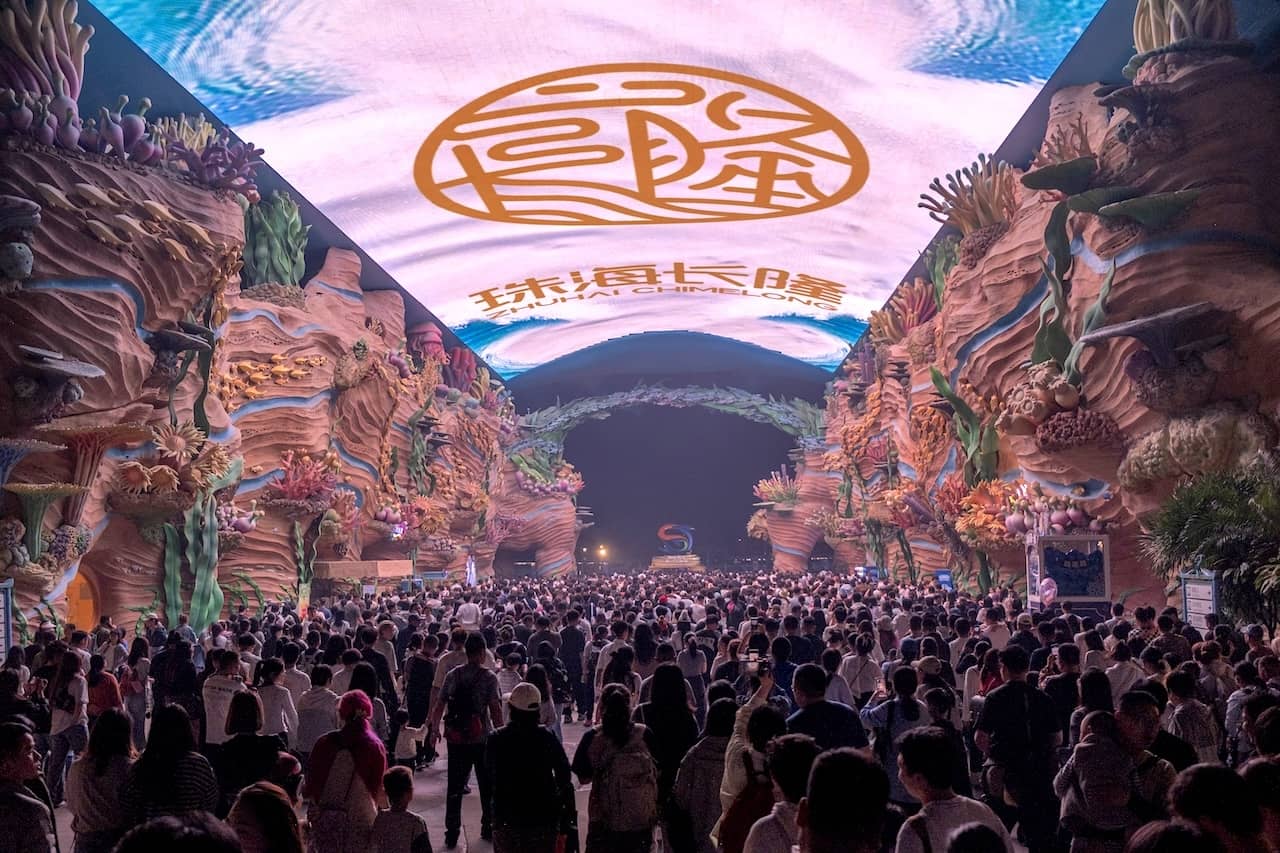
Ocean Kingdom’s “Main Street” entrance is a bold one. Large, cartoonish rockwork and corals funnel guests towards the heart of the park and underneath a massive LED digital canopy playing scenes of underwater life. A few shops and restaurants can be found within the rockwork, and street performers and the in-house character mascots greet incoming guests. It does a good job setting the playful, ambitious and somewhat cheesy tone you’ll find in the rest of the park.
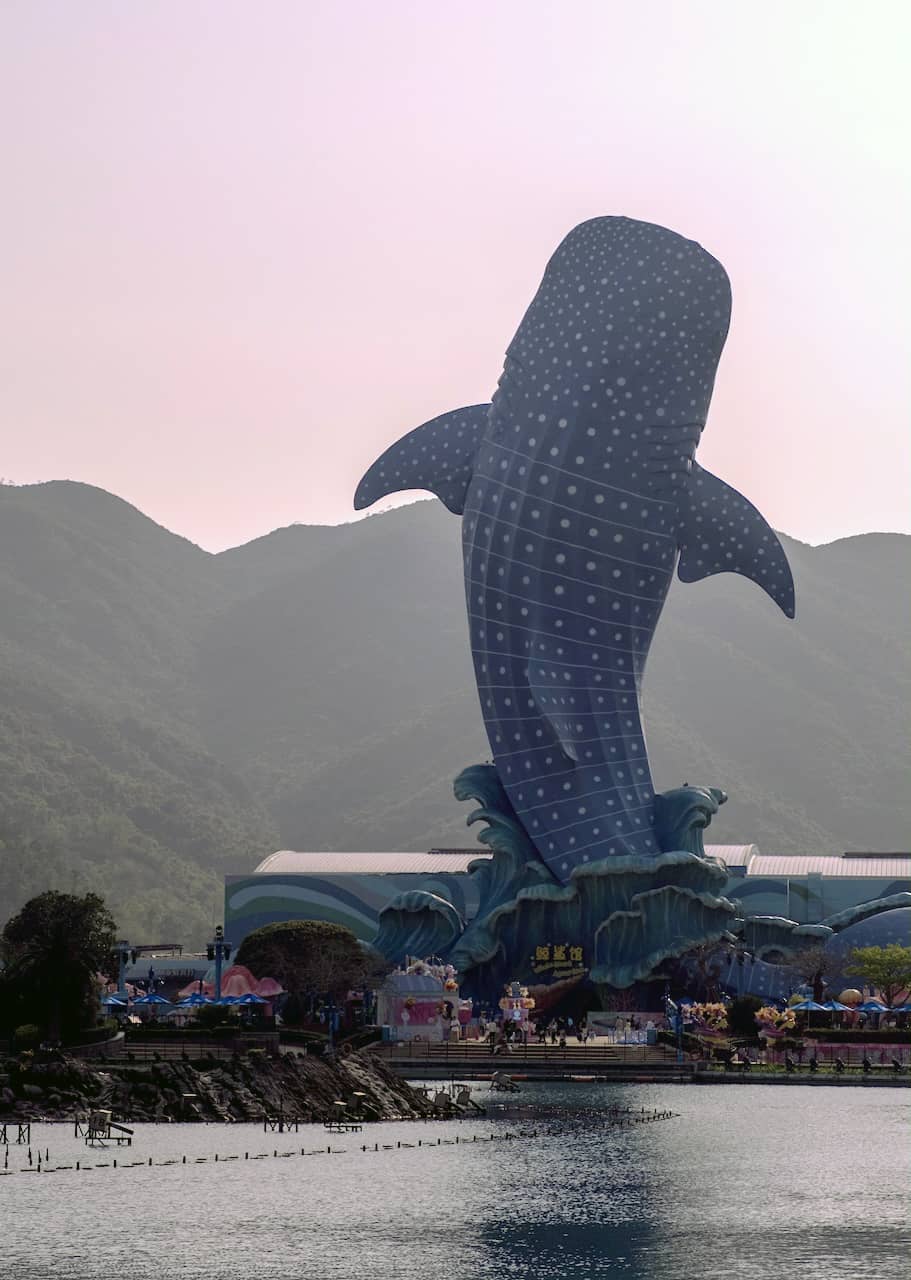
The large lagoon that forms the hub of the park, there isn’t much going on here during the day. Intermittent fountain shows can entertain you in a pleasant garden-like setting if you want to escape the more crowded areas of the park. A "mammoth parade" of what is really just one steampunk mammoth float can make for a diversion when it laps the lagoon daily.
At night is when this area really comes alive. Every other section of the park closes thirty minutes before Hengqin Ocean, funneling all the guests to the center of the park. First, a night-time parade vaguely reminiscent of Disney’s Spectromagic circles the lagoon, featuring the mascots, dancers and many luminescent floats.
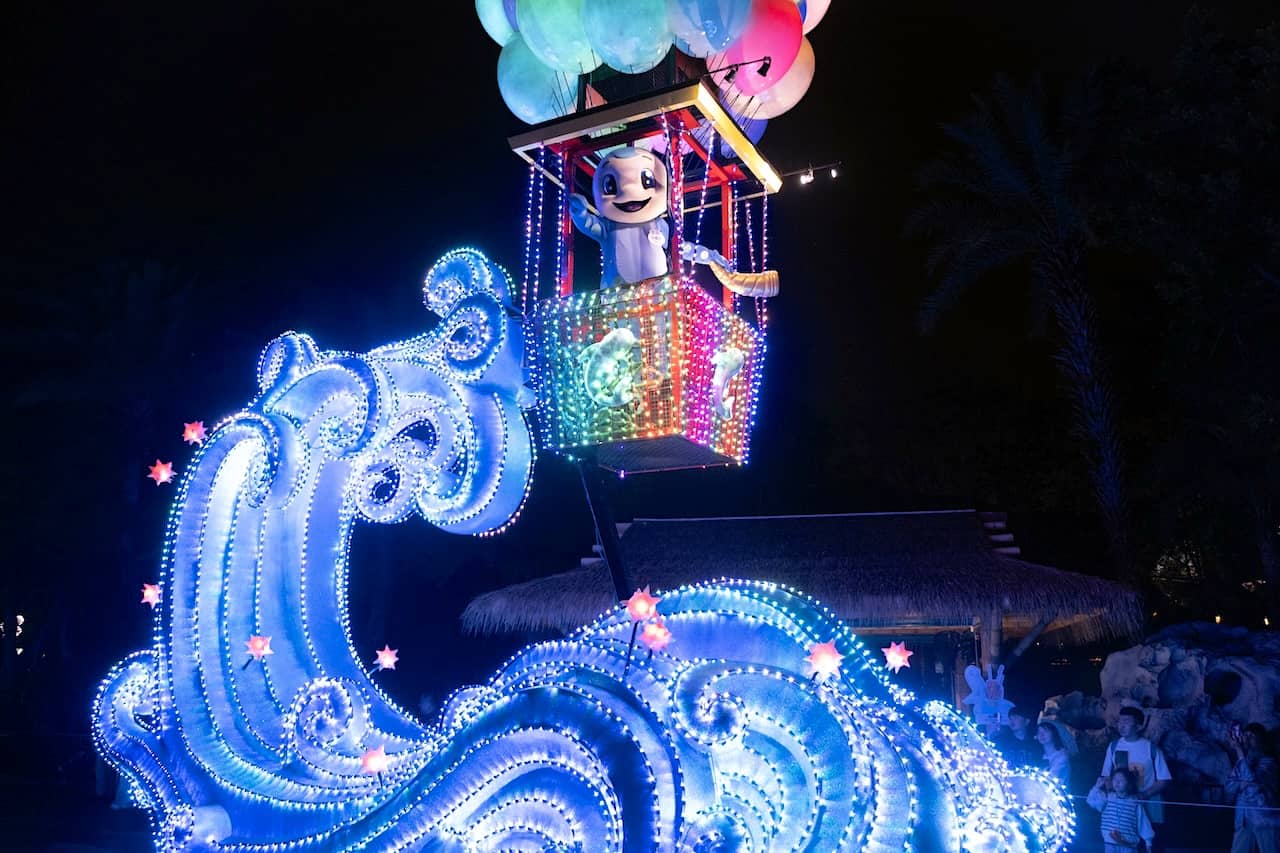
Once the parade has done its job to further lure guest towards the Hengqin Ocean lagoon, the nightly performance of Ocean Symphony takes place, a nighttime spectacular that is unhinged in the best kind of way. I’m lucky enough to have visited every Disney and Universal park in the world (until Epic ruins my Universal gauntlet), and I think this actually may be the best nighttime performance I’ve ever seen.
What it lacks in recognizable IP, or any kind of actual story to be honest, it makes up for with what China can do best: sheer spectacle.
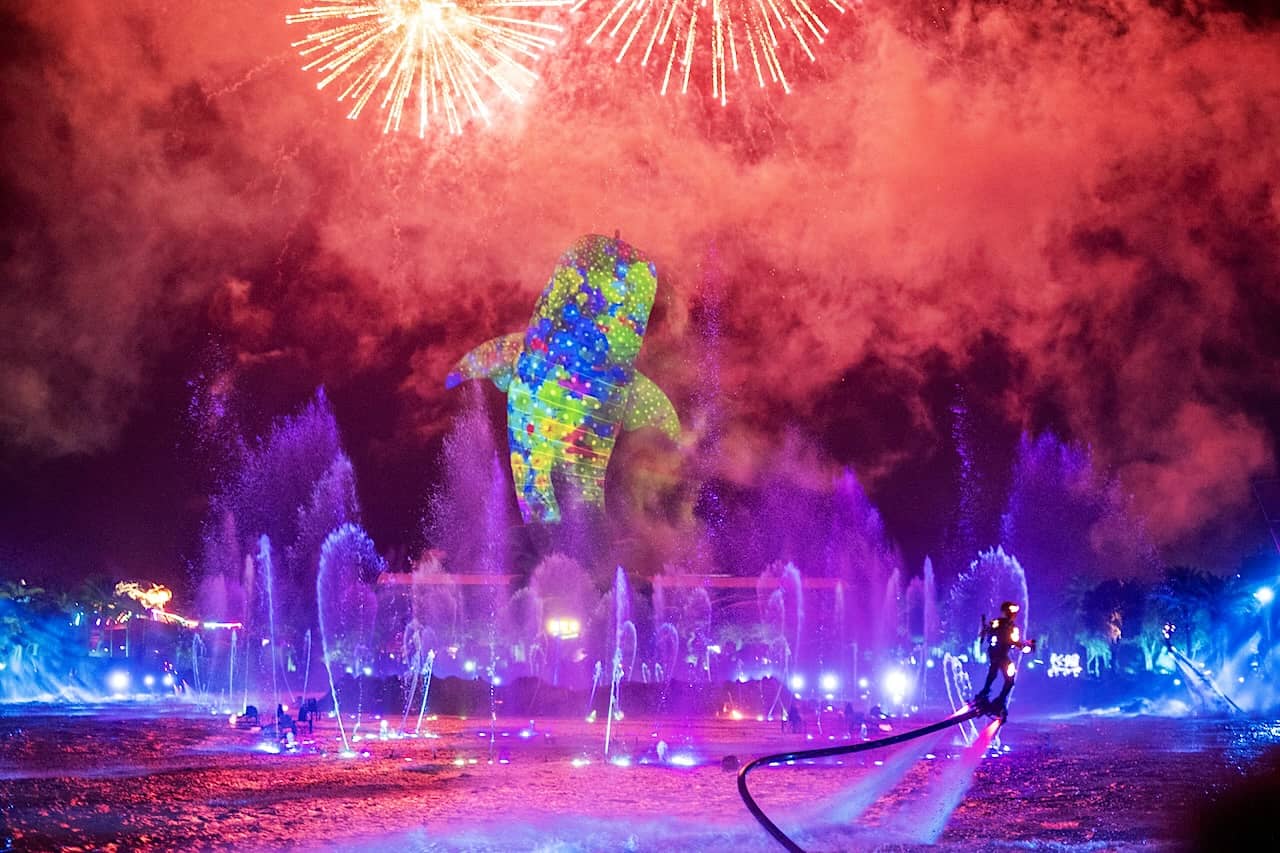
Fountains, lasers and projection mapping dance to dramatic, crashing percussion. A volcano spews fireballs from the lagoon center while drones assemble into a variety of marine animals swimming overhead. Fireworks ignite the sky in 360 degrees around the park. Live stunt performers zoom across the water and air on Jet Skis and flyboards, spewing pyrotechnics of their own. If Disney’s emotional, nostalgia-driven castle shows are Wes Anderson, then Ocean Symphony is all Michael Bay.
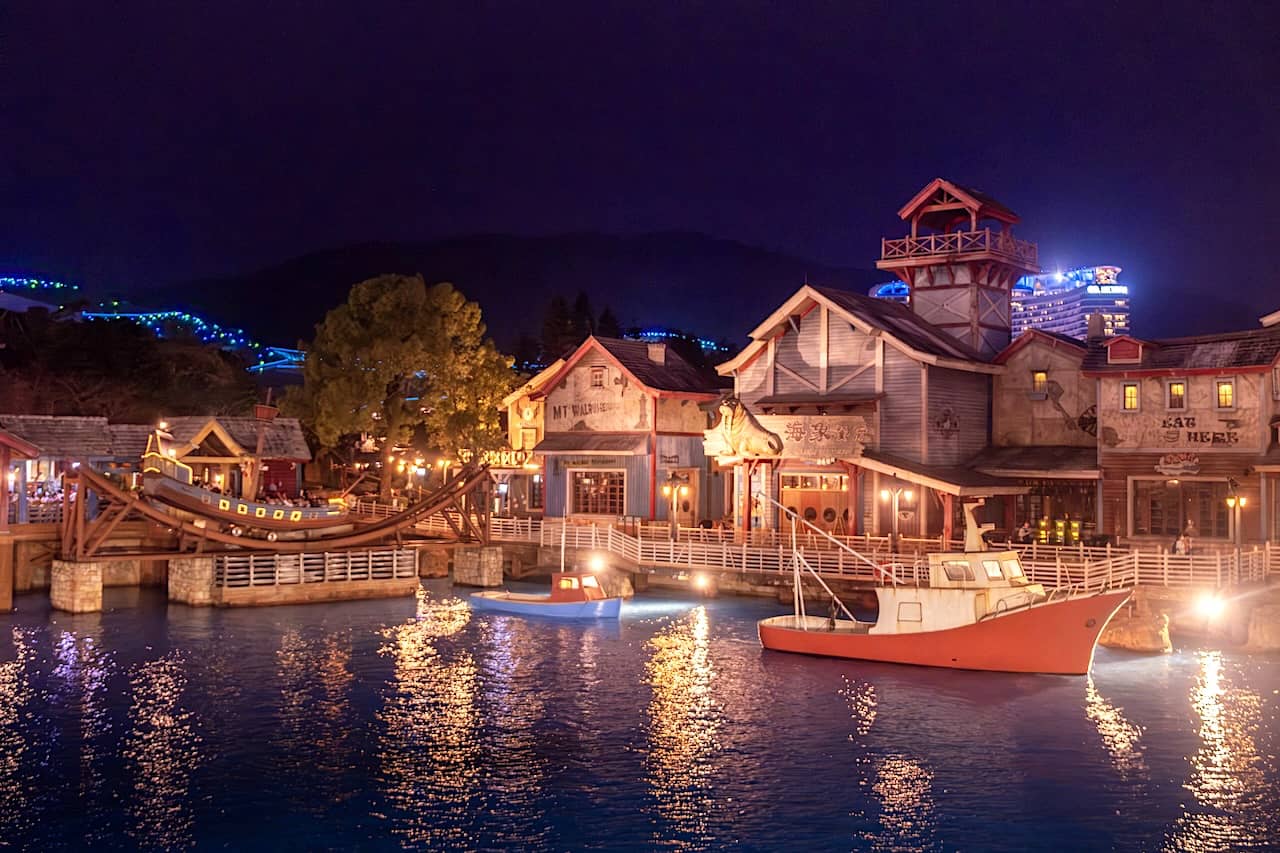
The eponymous Mount Walrus dominates this large section of the park, twin rockwork walruses that are home to the Walrus Splash chute ride. Surrounding it are various lagoons home to seals, seal lions and walruses with a pretty well-executed California Pacific wharf theme. Across from the exhibits is the Sea Lion theater featuring daily performances with the residents there.
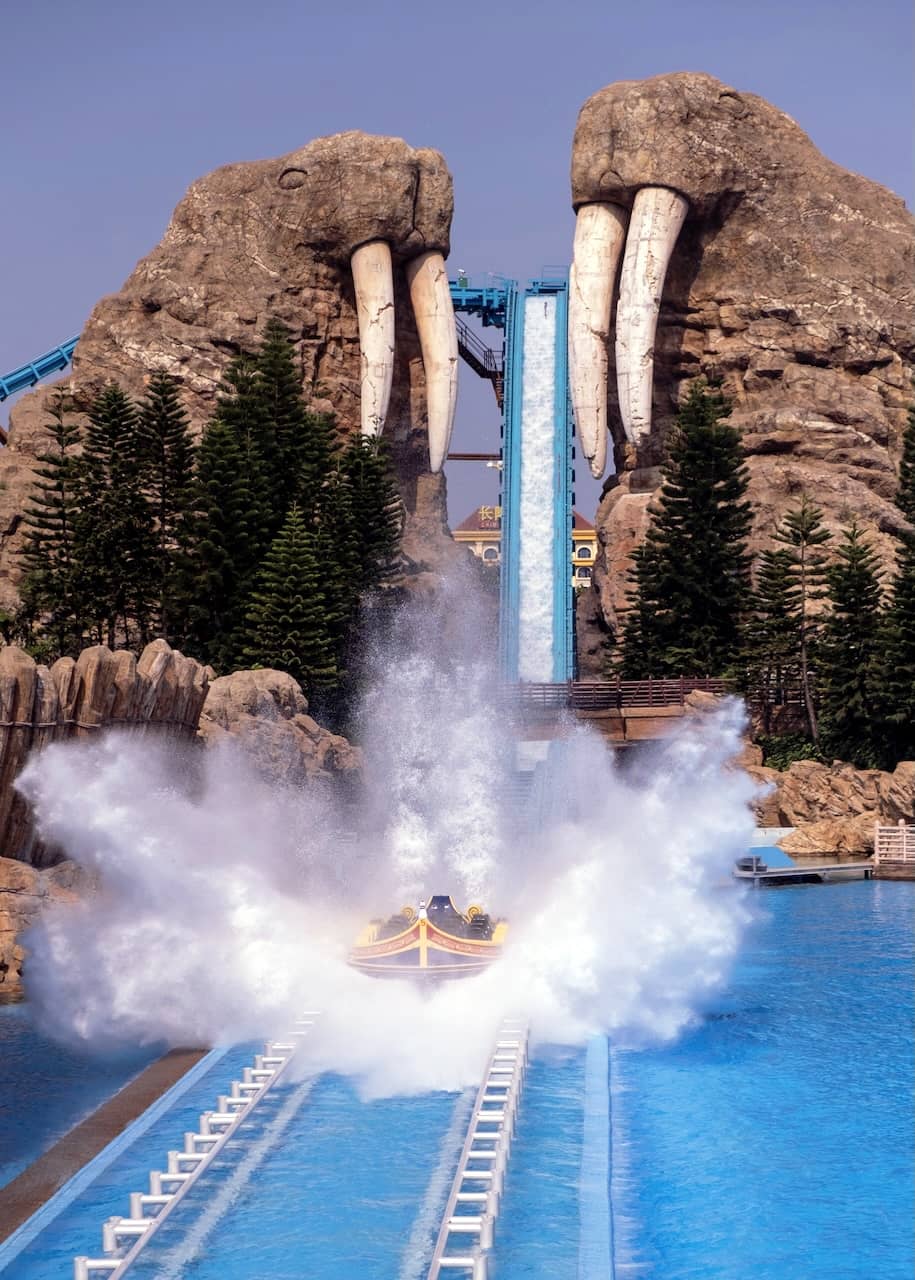
Tucked behind the theater is the sub-area called “Seabird World,” with many different animal exhibits in a zoo-like arrangement. Despite the name, these enclosures aren’t limited to the storks, cranes and pelicans you’ll find there, but also sea turtles, capybaras, and tortoises. The Jungle coaster, a well-themed kiddie coaster leaning into the mascots of the park, is also found here.
Continuing clockwise from the bottom-left from Mount Walrus, Hero Island is the main kids’ area of the park. It gives a vaguely nautical carnival type vibe and featuring the park mascots heavily (my favourite is the dressed-as-a-whale-shark “ocean genie”) and is populated mostly by various flat rides that are accessible to the youngest visitors, including the very basic “dragon wagon”-style Penguin coaster. Touch pools with rays and other tidal pool critters are also here.
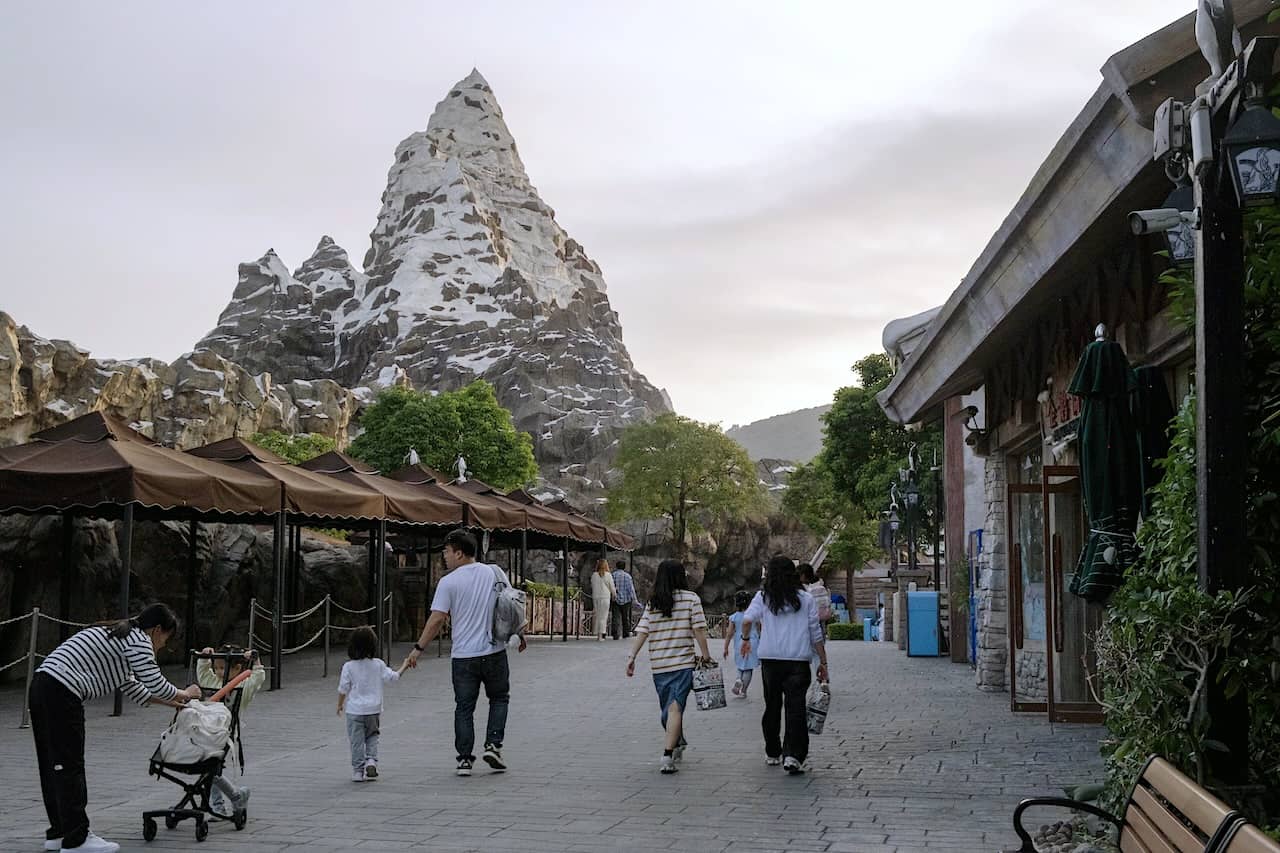
Nordic architecture and giant snowflakes welcome you to the area of the park celebrating our oceans at our Poles. The Polar Explorer water coaster is the local weenie, housed in an icy mountain, and transitions from boat ride to roller coaster before splashing back down to boat ride. You’ll also float by some very depressed looking brown bears, whom people can pay to throw food at.
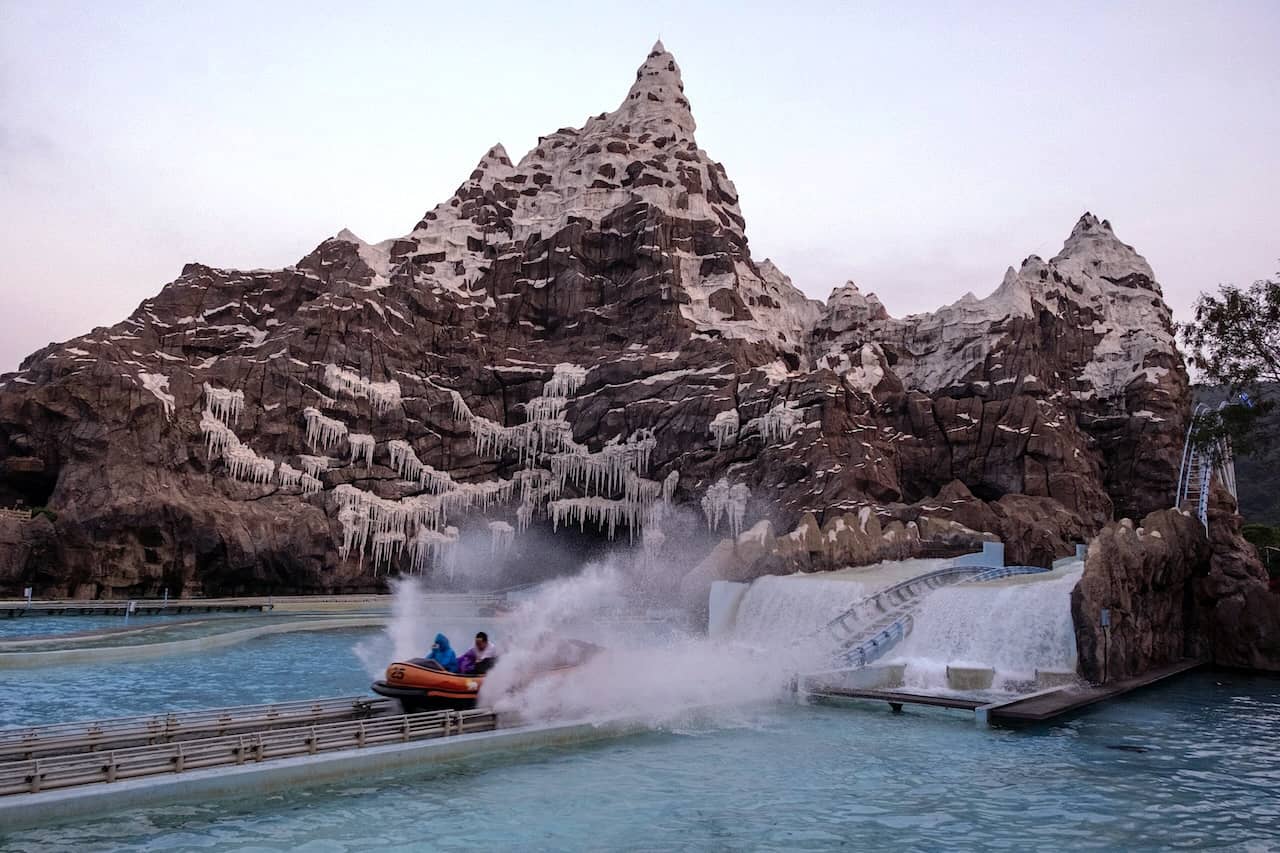
Beside the brown bears, there are polar bears, arctic wolves and arctic foxes displayed in the adjacent building, many of whom were displaying classic signs of stress – their enclosures are depressing and among the lowest-quality in the park.
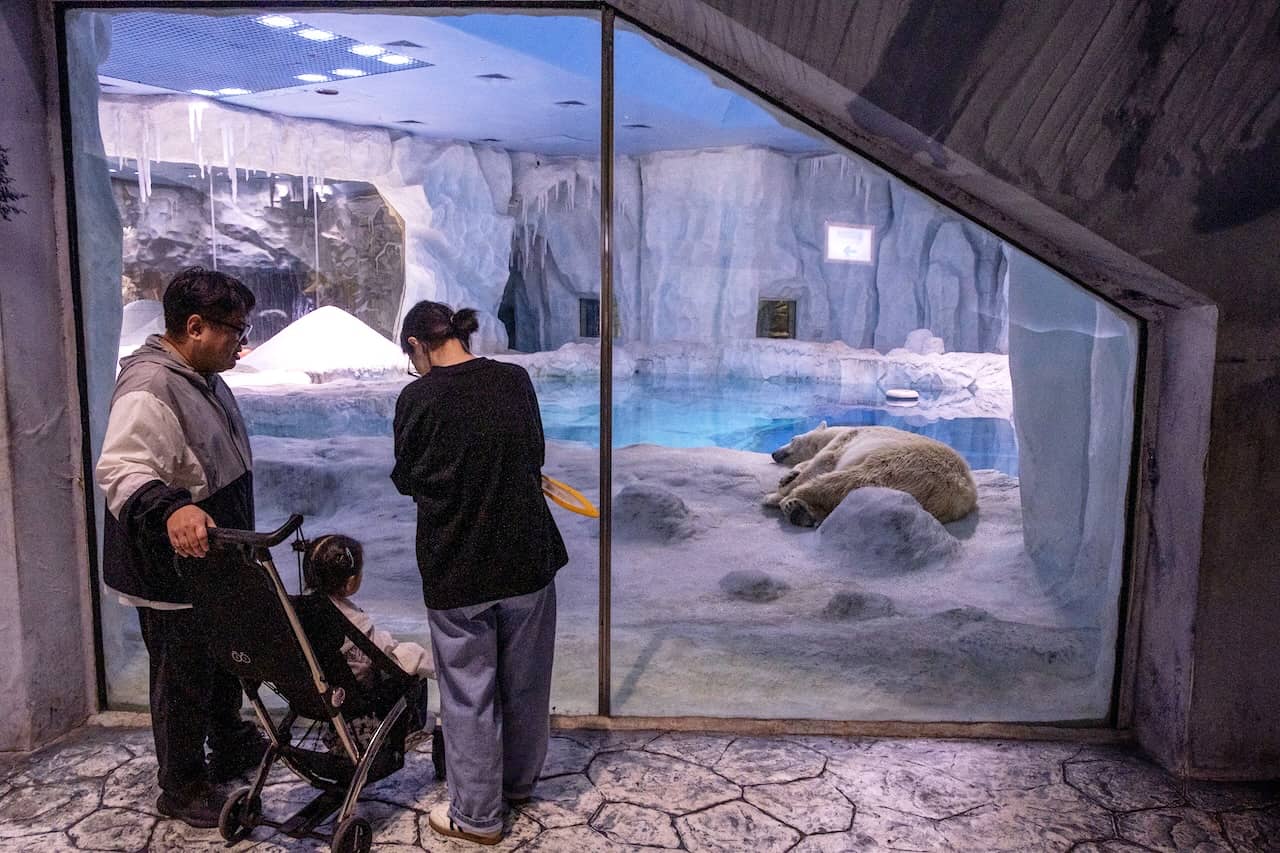
Across from them, there is also an extensive penguin house, which animals rights advocates have lambasted for being kept far too warm in tropical Zhuhai, and a beluga tank. Adjacent to that aquarium is another stadium theater for daily beluga shows.
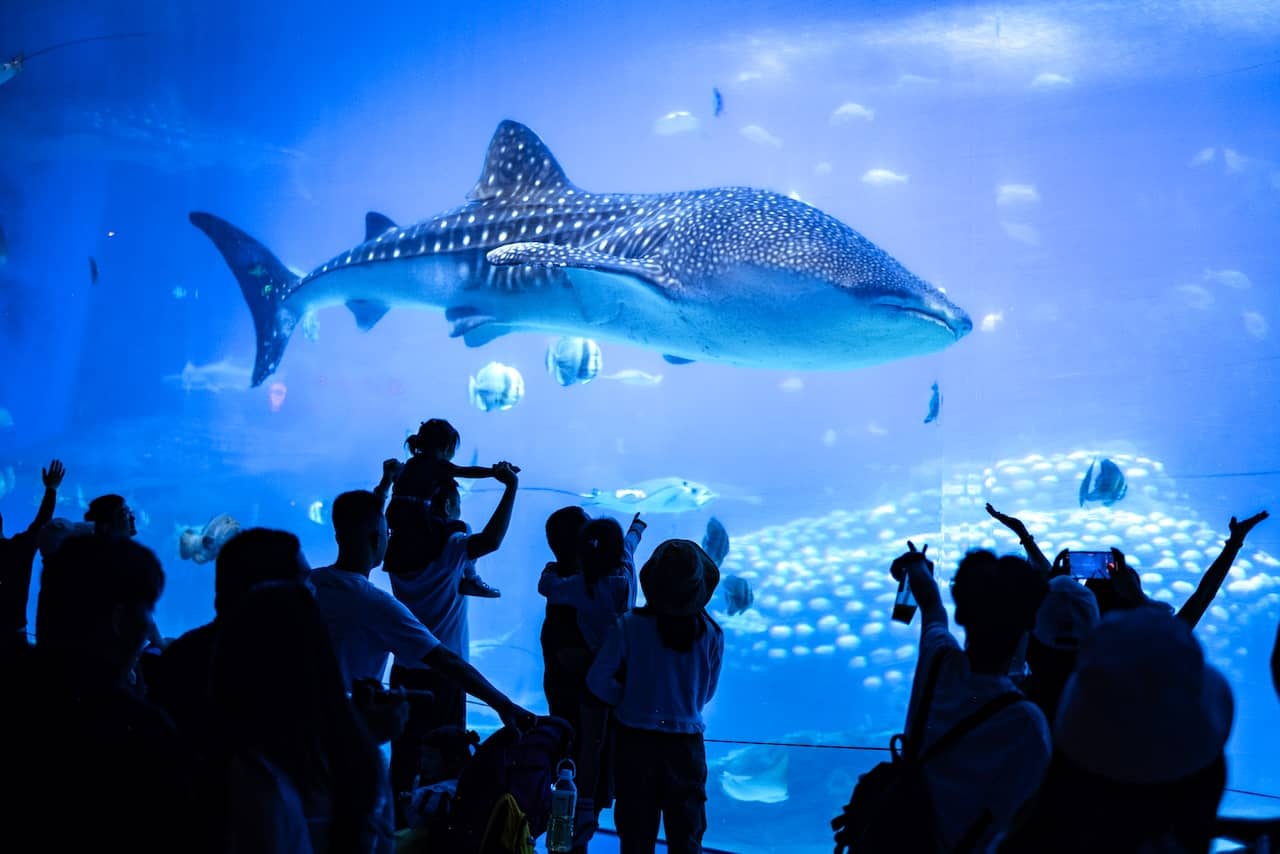
Ocean Beauty is devoted to the wonder of the open ocean and the deep sea, celebrated primarily in the massive aquarium complex that is housed in the massive whale shark “weenie” of the park. At the time of its opening, it was the largest aquarium tank in the world and remains a deeply impressive complex. A massive, multi-story acrylic wall (a world-record) allows hundreds of visitors at a time to watch thousands of fish, manta rays and the park’s three iconic whale sharks to circle past. There’s also a massive observation dome (...another world record.)
A third way to experience the tank is through the Omnimover-style submarine dark ride titled Deep Sea Odyssey, in which a robotic, definitely-not-Nemo clownfish accompanies you to travel through show scenes and back through the tank itself.
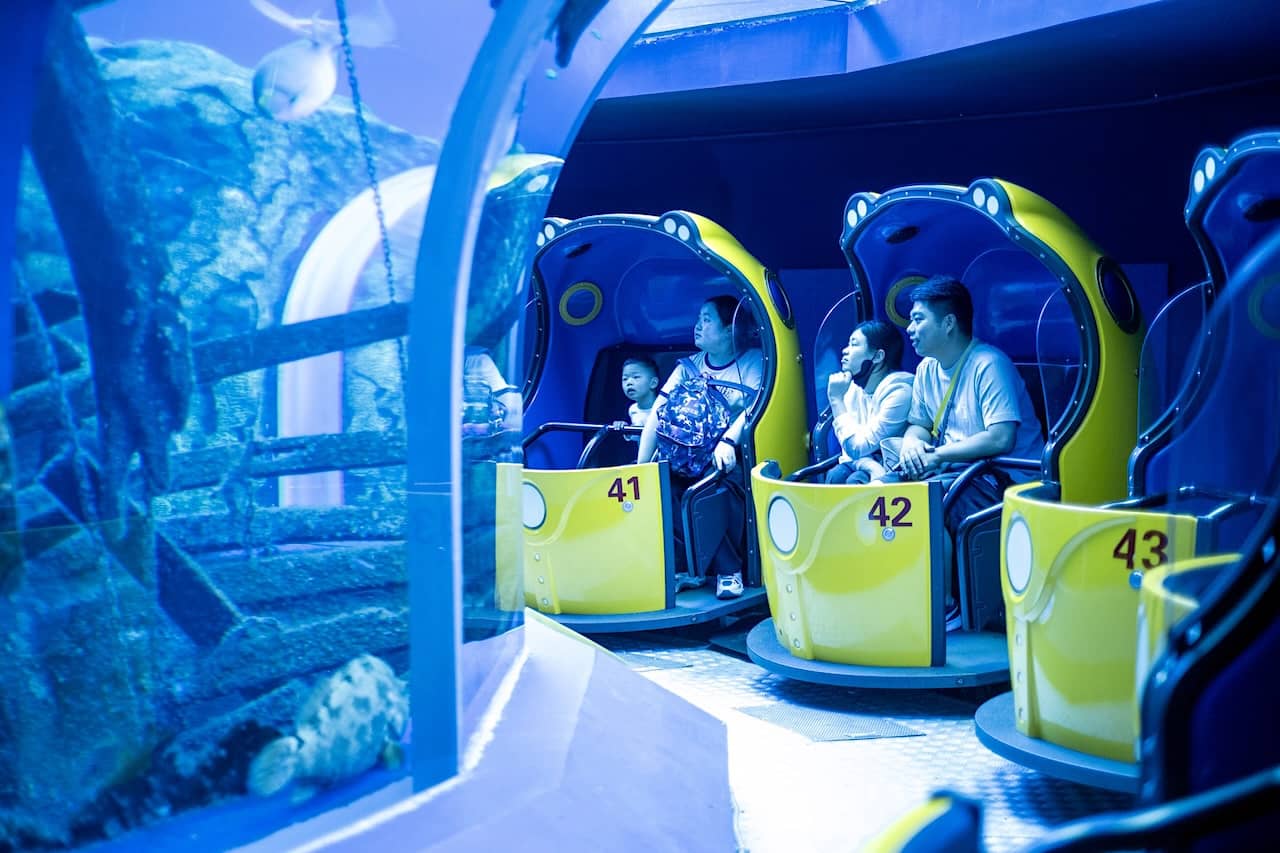
Despite its English name, this section of the park is themed more broadly to rainforests and freshwater ecosystems throughout the world (it’s Chinese name 雨林飞翔, “Flying through the Rainforest,” communicates this better.)
The pre-eminent attraction here is the Parrot Coaster, a winged B&M flyer with three inversions and a top speed of 108 km/h, and essentially the only real fix for adrenaline junkies visiting the park.
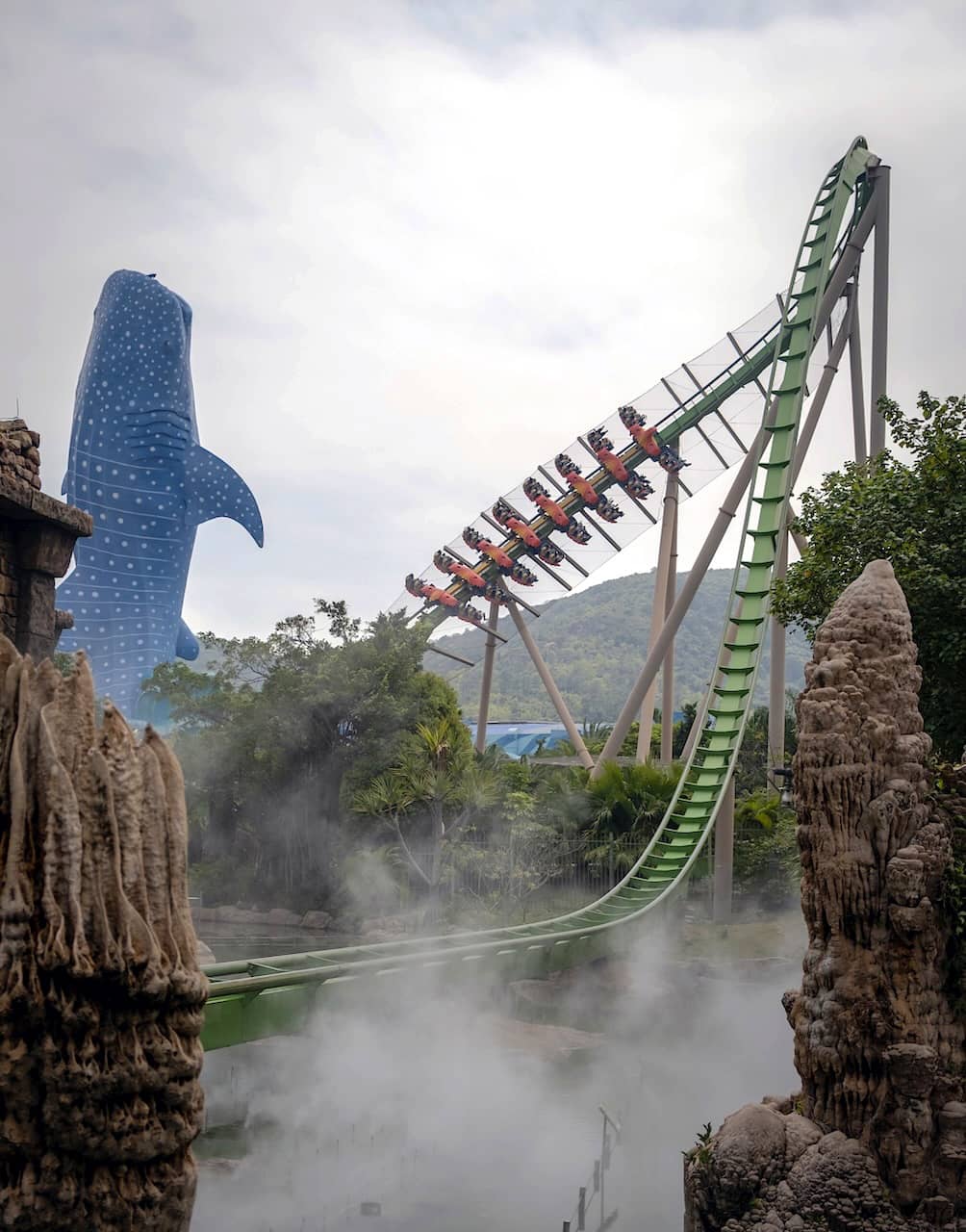
The Manatee aquarium here is also among the best animal exhibits in the park, with a world-class quality for both animal welfare and guest experience that exceeds what one would expect in a Western facility. Wandering through a labyrinth of tangled cypress roots and tunnels, guests find a variety of freshwater species aside from the West African manatees, including endemics like the Chinese Giant Salamander and Chinese gar.
The final area is devoted to their namesake and carries a confusing, loosely South Pacific theme with grass thatched rooves. Here you’ll find depressingly small tanks displaying pacific white-sided dolphins and Chinese white dolphins. These exhibits, along with the arctic mammals, are the worst in the park and fall well short of what one would expect in a Western facility. A large theater also has daily shows with bottlenose dolphins and false killer whales, although those animals are not on display and the quality of their enclosures can’t be seen.
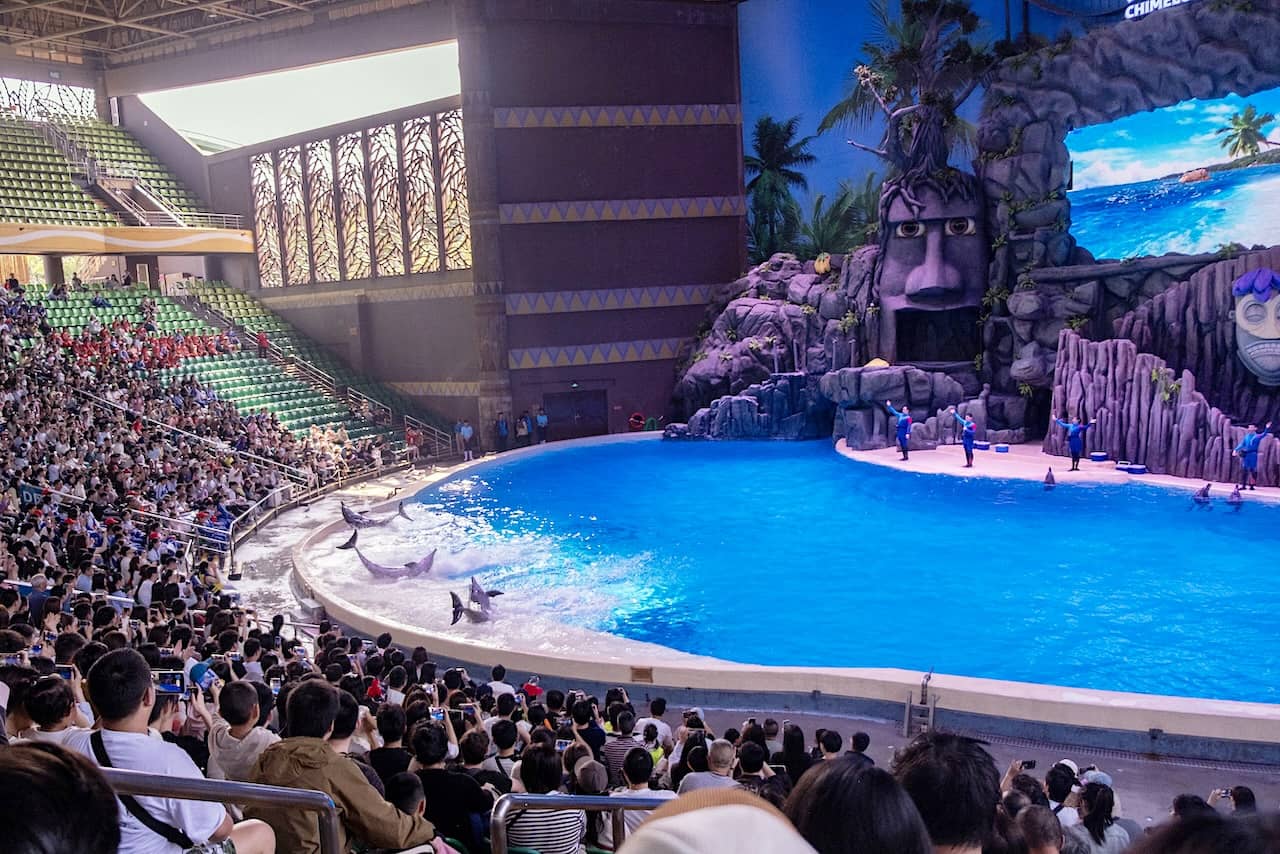
Beside the dolphins is the 5D Castle Theater, home to, yes, “the world’s largest projection screen.” Here is where you can watch a cute, 13-minute show “Kaka’s Great Adventure” that introduces you to the park’s cartoon mascots.
Overall, Chimelong Ocean Kingdom is a well-themed, morally ambiguous and genuinely entertaining experience. Unapologetically “Chinese” stylistically, it sets a standard for theme parks in the country that others seek to emulate, including, for better or worse, in their level of care for their animals. Its massive attendance numbers represent the burgeoning Chinese middle class with a newfound interest in wildlife, and while the execution remains deeply problematic from a conservationist perspective, I am hopeful the current iteration of this park is an uncomfortable stepping stone for a more environmentally-friendly China in the future.
The singular most important piece of advice is to pay attention to when you are visiting! I would recommend to simply avoid this place like the plague during weekends, or especially when there are national holidays. During these peak periods, queues can be hours long, and form even just to enter the animal exhibits – be prepared for relentless, shoulder-to-shoulder, pushy crowds.
Visiting on a weekday during a non-holiday period is an entirely different experience. You can arrive and explore at your leisure and it’s unlikely you’ll experience a queue longer than 30 minutes, with most things being walk-on.
If you cannot use WeChat or AliPay to purchase things inside the park, bring cash – the bank card is an unfamiliar anomaly to most businesses in China. You may be able to get away with a credit card for major purchases like admission or hotels, but I wouldn’t count on it.
Confusingly, many of the attractions and areas have completely different names in Chinese and in English. While there will be very few employees that can speak English, they are sure to be as helpful as they can and there is plenty of English signage. If you managed to get here from the airport, you’ll have no issues navigating inside the park.
* * *
To keep up to date with more travel and theme park news, please sign up for Theme Park Insider's weekly newsletter.
If you are interested in visiting, Theme Park Insider's partner sells discounted tickets to the park via its Chimelong Ocean Kingdom Ticket page.
Thanks for this well-written and informative report.
Wonderful piece, making me want to go there.
Thank for this write-up! I appreciate the lengths you go to contextualize the care of animals at this park. While it would probably not be on my list of places to visit, I’m also intrigued and somewhat heartened by your observations regarding shifts in in cultural awareness and appreciation for animal life in China, despite the alarming reports of depression animal exhibits and behaviors. Here’s hoping the shift towards more compassionate, responsible and respectful care happens much sooner than later.
Hey thanks guys, so glad you liked it! China is just such a different place, I feel like I can't even write about theme parks without going down a rabbit hole. Always a pleasure to write for Robert!
Thanks for the report really interesting. I've been to both the Shanghai and Beijing zoo's and all though they had some beautiful landscaping and honestly overall were pretty fantastic some of the exhibits were very hard to see. The conditions of the animals were definitely a bit sad to see in certain areas but others had beautiful exhibits and were clearly doing really well.
I've always had reservations about going to this park the next time we were in the area and honestly I'm still on the fence about it but it does look pretty impressive.
Greetings all.
A lot of remarks can be formulated in this context. The topics are varied.
The attendance topic.
...(> Making necessary reference, relative to factual market size)
...(> Indeed TEA/AECOM related, which never provides data for smaller markets)
The visitor experience, = experience quality, topic.
...(> A very difficult one)
The animal care topic.
...(> The least disputed worldwide, standards are available all over)
The animal captivity topic.
...(> A dispute on 'ethics', thus purely subjective-human, NOT 'nature')
...(> Including onesided, sometimes completely false data on animal stress)
The mixed activities topic, in this case animals + amusement.
...(> Showcasing animals + 'unrelated' general amusement as the real attendance driver)
I will take some time to get my notes down on one or more of these, I lack 'time' a bit, these days :-)
--------
(To inform: I stepped out of IAAPA and TEA circles, a year before covid. Of course I remained interested in the industry, and continued in "amusement industry heritage protection" studies.)
This article has been archived and is no longer accepting comments.
really excellent report. always enjoy reading your pieces.